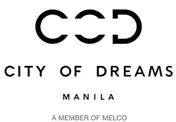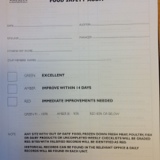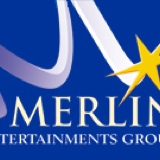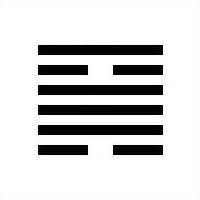Title Page
-
Select which Kitchen/Outlets to Inspect
- Bakery
- Banquet Kitchen Production
- Banquet Kitchen Events
- Banquet Service
- Breezes Kitchen
- Breezes Service
- Butchery
- Café Society Kitchen
- Café Society Service
- Center Play Kitchen
- Center Play Service
- Chez Gingy Kitchen
- Chez Gingy Service
- Chip Shoppe
- Chocol8 - The Garage
- Chow Down Kitchen
- Chow Down Service
- Commissary
- Crystal Dragon Kitchen
- Crystal Dragon Service
- Crystal Lounge
- Hyatt – Club Lounge Kitchen
- Hyatt – Club Lounge Service
- Hyatt – The Lounge
- Hyatt-The Café Kitchen
- Hyatt-The Café Service
- Hyatt-IRD Kitchen
- Hyatt-IRD Service
- Hyatt-Pastry & Bakery
- Jing Ting Kitchen
- Jing Ting Service
- Juiced - The Garage
- LG Gaming
- Li Ying Lounge Kitchen
- Li Ying Lounge Service
- Li Ying Hin Kitchen
- Li Ying Hin Service
- Nobu Manila Kitchen
- Nobu Manila Service
- Nobu IRD Service
- Nobu Lounge
- Noodl8 Kitchen
- Noodl8 Service
- Nuwa Gaming
- Nüwa IRD
- Receiving
- Red Ginger Kitchen
- Red Ginger Service
- Service Bars 1
- Service Bars 2
- Service Bars 3
- Service Bars 5
- Qi Long Chinese Kitchen
- Qi Long Korean Kitchen
- Qi Long Western Kitchen
- Qi Long Service
- The Bar
- The Roasters
- Warehouse
- Wave Kitchen
- Wave Service
- Pastry
-
Conducted on
-
Prepared by
-
Location
Food Safety Internal Audit Checklist
LABELING AND STORAGE
-
Color coding stickers are being used
-
Food items are covered and correctly labeled
-
No expired / spoiled food items
-
All food items are stored in food grade containers
-
FEFO is followed in freezers / chillers / dry storage / warehouse
-
Prepared / opened food items are properly labeled with secondary shelf life
-
Chiller temperature is </=4*C
-
Freezer temperature is </= -18*C
-
Dry storage temperature is between 10*C to 21*C and have a relative humidity between 50% to 60%
-
Chiller / freezer / dry store follows proper storage spacing: 6” above the floor, 12” from evaporators, 2” from the wall
-
Storage facilities are well maintained and has no cross contamination risk
-
Chiller and freezer monitoring records are updated
-
Chiller and freezer gaskets are intact and clean
-
Plastic curtains are clean and complete
-
Color coded crates are appropriately used
-
No carton boxes inside the kitchen / bar storages
-
Food hierarchy storage is being followed
KNIVES AND CHOPPING BOARDS
-
Color coding of chopping boards and knives are properly followed
-
Color coded chopping boards and knives in use are in sanitary condition
-
Color coded chopping boards and knives in storage racks are clean and sanitized; if placed in sanitizing bath, sanitizer solution should be 100ppm (Chlorine) 200ppm (Quat)
-
Chopping boards are properly maintained
-
Knives blades are not chipped
THAWING FOOD
-
Thawing food in the refrigerator is properly covered, labeled and recorded
-
Thawing food in running water is properly labeled and should be thawed in 3 hours
-
No cross contamination risk between the food being thawed and other food items
INTERNAL COOKING TEMPERATURE, COOLING, HOLDING AND REHEATING OF FOOD
-
No cross contamination risk between food or between food and other items
-
Minimum core temperature of food items are being followed, monitored and recorded
-
Cooling of hot food at or above 63*C to 21*C in 2 hours and </= 4*C within 1 hour
-
Reheating of food items must reach the minimum temperature of 75*C within 1 hour from reheating
-
Cooking, cooling, cold holding, hot holding and reheating records are available, complied on a timely manner and verified by the Head Chefs / Outlet Managers
-
Holding equipments are clean and well maintained
-
Hot holding equipments are clean and well maintained
-
Hot holding temperature of food items are at =/> 63*C
-
Cold holding temperature of food items are at 4*C
DISHWASHING AND GLASS WASHING MACHINES
-
Wash temperature ranges from 55*C to 65*C
-
Final rinse temperature ranges from 82*C to 86*C
-
Crockeries / utensils / glass wares / china wares exit dry from the washing machines and has =/> 71*C
-
Broken wash wares are appropriately segregated in a labeled container
-
Records for dishwashing and glass washing are available, updated and signed verified
-
Shelving are clean and well maintained
ICE MACHINE
-
Clean and free from contamination
-
Soaking sanitizer for ice scooper is at 200ppm and is replaced in timely manner
-
Cleaning records are available and updated
POTS AND PANS
-
Clean and properly maintained
-
Pot washing follows the procedure “wash, rinse and sanitize”
-
Sanitizing solution is at 200ppm
-
Shelving are clean and well maintained
BARS AND KITCHEN MAINTENANCE
-
Food equipments and utensils used are clean and well maintained
-
Food contact surfaces are being sanitized
-
Wall, floor and ceiling are clean and has no cracks or gaps and groupings are intact
-
Silicon sealants are intact and has no gaps
CHEMICAL CONTROL
-
Designated chemical storage are available and properly labeled
-
Chemicals used are coming from approved suppliers
-
Safety Data Sheets are available
-
Spray bottles with chemicals are properly labeled and are at the right concentrations
HAND WASHING STATION
-
Associates follow proper hand washing procedures
-
Hand wash station amenities are complete and well maintained (water / paper towel / waste bin / hand soap / sanitizer and hand washing instructions)
PERSONAL HYGIENE AND HABITS
-
Associates comply with personal hygiene and grooming standards
-
Personal belongings such as water bottles (non-glass), cellular phones and the likes are placed in designated and labeled areas / containers
-
Use disposable gloves properly
-
No eating inside the kitchen / bars except during food tasting
-
Tasting spoons are one time use and placed in designated containers
-
Associates practice proper waste disposal and segregation
VISITORS CONTROL
-
Visitors (Contractors / Associates from other departments) are instructed and comply to hygiene and grooming standards in food and beverage preparation areas
-
Visitor’s pass / ID is worn
DESIGN AND STRUCTURE
-
Floor is well maintained, no cracks or water pooling
-
Walls are well maintained and has no cracks
-
Ceiling is well maintained and has no gaps or water drippings
-
Kitchens are well lit and all lights are functional with shatter proof covers
-
Facility fixtures are in good working condition
-
Drains are covered and well maintained
-
Grease traps are clean and has no foul odor
-
Exhaust hoods are functional, clean and well maintained
-
Garbage bins are covered and well maintained
OCCUPATIONAL HEALTH AND SAFETY
-
First aid kit is available and has sufficient content
-
Fire extinguishers are placed in strategic locations, are not expired and monitored
-
Fire blankets are available and not expired
-
Evacuation plans are posted on strategic areas and staffs are knowledgeable on where to exit in case of emergency
-
Exit signs are lit
COMPLETION
-
Comments
-
Inspected by:
